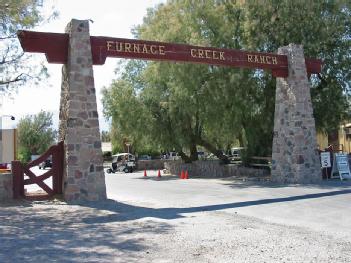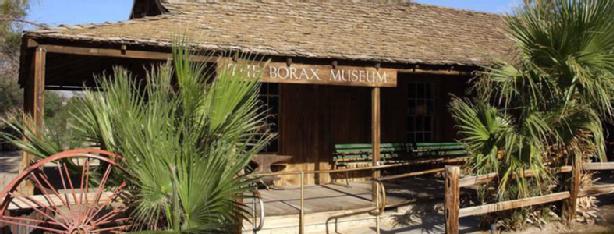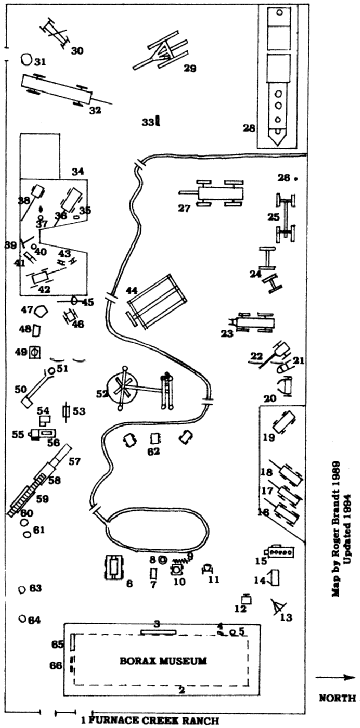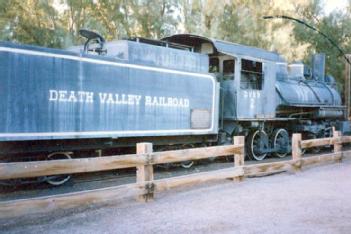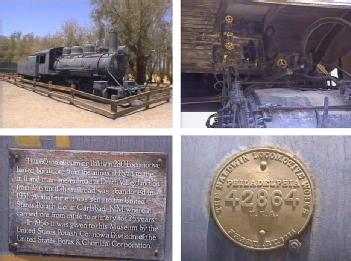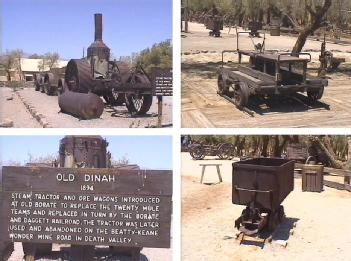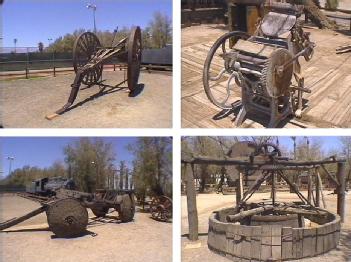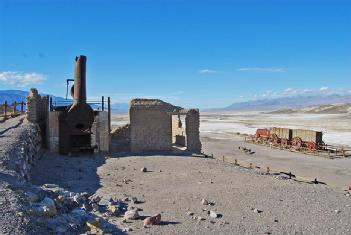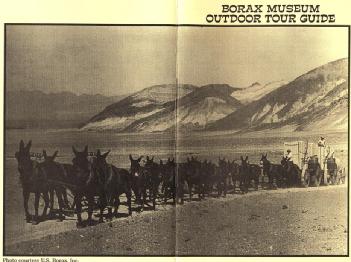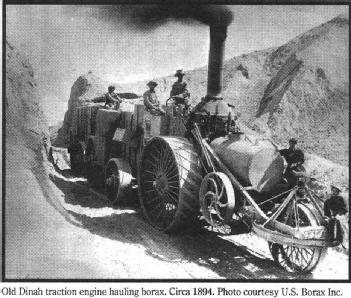
 |
Death Valley National Park with Borax-Museum |
92328 Death Valley, CA, United States of America (USA) (California) |
|
| Address |
(Furnace-Creek-Museum)
328 Greenland Rch Rd |
| Floor area | only roughly guessed: 3 000 m² / 32 292 ft² |
Mining
- Steam engines/generators/pumps
- Typewriter, calculating and coding
- Carriages
- Telephone / Telex
- Railway
- Mills
- Mine- & Parc Railways
|
Opening times
|
Furnace Creek Visitor Center: Daily 8am - 5pm Pacific Time, if not temporarily closed. | ||||
|
Status from 06/2024
|
We don't know the fees. | ||||
| Contact |
|
||||
| Homepage |
www.nps.gov/deva/index.htm www.furnacecreekresort.com |
||||
| Location / Directions |
Death Valley National Park has more than 3.3 million acres of spectacular desert scenery, interesting and rare desert wildlife, complex geology, undisturbed wilderness, and sites of historical and cultural interest. Bounded on the west by 11,049 foot Telescope Peak and on the east by 5,475 foot Dante's View, Badwater is the lowest point (-282 feet) in the western hemisphere The visitor center is located in the Furnace Creek resort area on California Highway 190. Furnace Creek is 30 miles from Death Valley Junction and 24 miles from Stovepipe Wells Village. The Borax Museum is located at Furnace Creek Ranch To get to Harmony Borax: From Furnace Creek drive north on highway 190. After 1.5 miles turn left on Borax Mine Road. Park in the lot at the start of the paved loop. Harmony Borax address: Borax Mill Road, Death Valley National Park, Death Valley, CA 92328 Harmony Borax coordinates: 36.480139,-116.87248 |
| Description | Harmony Borax Workswas the central feature in the opening of Death Valley and the subsequent popularity of the Furnace Creek area. The plant and associated townsite played an important role in Death Valley history. Tonopah and Tidewater Railroadthe T&T, was a class 2 railroad extending roughly 200 miles through remote reaches of the Mojave Desert from the Santa Fe Railway railhead at Ludlow, California, through Death Valley and Amargosa Valley, terminating at the mining towns of Tonopah and Goldfield in the Great Basin Desert in Nye County, Nevada. The railroad was listed as a common carrier, however it was built by Francis Marion Smith the "Borax King" and his Pacific Coast Borax Company primarily to transport borax to processing and market. The line is now completely abandoned. The Furnace Creek Innwas built by the Pacific Coast Borax Company of Twenty Mule Team fame as a means to save their newly built Death Valley Railroad. Mines had closed and shipping transportation was no longer needed, but mining tourist pockets seemed a sure way to keep the narrow-gauge line active. The borax company realized travelers by train would need a place to stay and wealthy visitors accustomed to comfort would be attracted to a luxury hotel. Furnace-Creek-Museum presentsthe Borax Museum, the oldest structure in Deah Valley, |
[dsp_museum_detail.cfm]
| Data Compliance | More Information |

